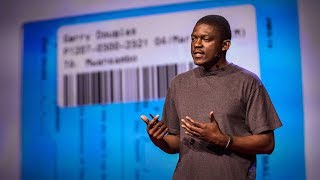(单词翻译:单击)
Like every passionate software engineer out there, I closely follow technology companies in Silicon Valley,
就像外面的每一位热情的软件工程师,我密切关注硅谷的科技公司,
pretty much the same way soccer fans follow their teams in Europe.
非常类似欧洲的足球迷关注球队的方式。
I read articles on tech blogs and listen to podcasts on my phone.
我会阅读科技博客上的文章,也会用我的手机听播客。
But after I finish the article, lock my phone and unplug the headphones,
但在我读完文章,把我的手机上锁,并拔掉耳机之后,
I'm back in sub-Saharan Africa, where the landscape is not quite the same.
我就回到了撒哈拉以南非洲,在那里,状况不太一样。
We have long and frequent power outages, low penetration of computers,
我们常常会有很长时间的电力中断,计算机的普及率很低,
slow internet connections and a lot of patients visiting understaffed hospitals.
网络连接速度缓慢,许多病人要去人手不足的医院。
Since the HIV epidemic, hospitals have been struggling to manage regular HIV treatment records for increasing volumes of patients.
从艾滋病毒的流行开始,医院就很努力地在管理因病人数量大增而造成的艾滋病毒治疗记录。
For such environments, importing technology systems developed elsewhere has not worked,
对这样的环境而言,其他地方研发出来的科技系统是不适用的,
but in 2006, I joined Baobab Health, a team that uses locally based engineers
但在2006年,我加入了Baobab Health,这个团队用的人都是住在当地的工程师,
to develop suitable interventions that are addressing health care challenges in Malawi.
其工作是要开发适合的介入措施,以应付马拉维所面临的卫生保健挑战。
We designed an electronic health record system that is used by health care workers while seeing patients.
我们设计了一个电子健康记录系统,供卫生保健人员在照看病人的时候使用。
And in the process we realized that we not only had to design the software, we had to implement the infrastructure as well.
在过程中,我们发现,我们不仅需要设计软件,我们还得导入基础设施。
We don't have enough medical staff to comprehensively examine every patient,
我们没有足够的医疗人员来全面地检查每一位病人,
so we embedded clinical guidelines within the software to guide nurses and clerks who assist with handling some of the workload.
所以我们在软件中设置了临床指南,用来指导护士和见习医生,这样可以减低工作量。
Everyone has a birthday, but not everyone knows their birthday,
每个人都有生日,但不是每个人都知道他们的生日,
so we wrote algorithms to handle estimated birthdates as complete dates.
所以我们写了算法来估计生日,当作完整日期。
How do we follow up patients living in slums with no street and house numbers?
贫民窟没有街道号码,我们要如何追踪住在那里的病人?
We used landmarks to approximate their physical addresses.
我们用地标来约作他们的实体地址。
Malawi had no IDs to uniquely identify patients, so we had to implement unique patient IDs to link patient records across clinics.
马拉维并没有ID来明确区别病人,所以我们得要设置不重覆的病人ID,把各诊所的病人记录连结起来。
The IDs are printed as barcodes on labels that are stuck on personal health booklets kept by each patient.
我们把ID打印成条形码,印在每个病人持有的个人健康手册所附的标签上。
With this barcoded ID, a simple scan with a barcode reader quickly pulls up the patient's records.
有了这种条形码ID,加上一个简单的条形码扫瞄器,就能马上调阅病人的记录。
No need to rewrite their personal details on paper registers at every visit.
不需要在病人每次造访时都还得在书面登记资料上重写其个人细节。
And suddenly, queues became shorter.
突然间,排队的队伍就变短了。

This meant patients, typically mothers with little children on their backs, had to spend less time waiting to be assisted.
这意味着,病人,通常是背着小孩的母亲,不用再花那么长的时间等待帮助。
And if they lose their booklets, their records can still be pulled by searching with their names.
如果病人弄丢了自己的手册,还是可以透过搜寻他们的名字来把记录调出来。
Now, the way we pronounce and spell names varies tremendously.
我们的名字有非常不同的发音和拼音方式,
We freely mix R's and L's, English and vernacular versions of their names.
我们可以自由混合R和L,他们的名字还有英语版和方言版。
Even soundex, a standard method for grouping words by how similar they sound, was not good enough.
即使是Soundex算法,它是一种将字词依发音相似度来分类的标准方法,用在这里也不够好。
So we had to modify it to help us link and match existing records.
所以我们得要修改它,来协助我们连结和配对既有的记录。
Before the iPhone, software engineers developed for personal computers,
在iPhone推出前,软件工程师是为个人计算机在做开发,
but from our experience, we knew our power system is not reliable enough for personal computers.
但根据我们的经验,我们知道,若要用个人计算机,我们的电力系统不够可靠。
So we repurposed touch screen point-of-sale terminals that are meant for retail shops to become clinical workstations.
所以我们把触碰荧幕销售点终端机拿来做不同的用途,它们本来是给零售店使用的,被我们变成了临床工作站。
At the time, we imported internet appliances called i-Openers that were manufactured during the dot-com era by a failed US company.
那时,我们进口了叫做i-Openers的互联网设备,那是在网络公司时代,由一间失败的美国公司所制造的。
We modified their screens to add touch sensors and their power system to run from rechargeable batteries.
我们修改了他们的荧幕,加上触碰传感器,还有用可充电电池来运作的电力系统。
When we started, we didn't find a reliable network to transmit data, especially from rural hospitals.
一开始时,我们找不到可靠的网络来传输资料,特别是在郊区的医院。
So we built our own towers, created a wireless network and linked clinics in Lilongwe, Malawi's capital.
所以,我们建立了我们自己的塔台,创建了无线网络,连接了马拉维首都利隆圭的诊所。
With a team of engineers working within a hospital campus, we observed health care workers use the system
一个工程师团队被安排在医院园区内工作,让我们能观察卫生保健人员使用系统的状况,
and iteratively build an information system that is now managing HIV records in all major public hospitals in Malawi.
并反覆地继续建立信息系统,这个系统现在可管理马拉维所有主要公立医院的艾滋病毒记录。
These are hospitals serving over 2,000 HIV patients, each clinic.
这些医院平均每所都要服务超过两千名艾滋病患。
Now, health care workers who used to spend days to tally and prepare quarterly reports are producing the same reports within minutes,
卫生保健人员过去需要花数天时间记录和准备季报表,现在只要几分钟就能做出同样的报表,
and health care experts from all over the world are now coming to Malawi to learn how we did it.
而全世界的卫生保健专家现在都来马拉维学习我们的做法。
It is inspiring and fun to follow technology trends across the globe,
追随全球的科技趋势,很鼓舞人心也很有趣,
but to make them work in low-resourced environments like public hospitals in sub-Saharan Africa,
但要让它们也能用在缺乏资源的环境里,比如撒哈拉以南非洲的公立医院,
we have had to become jacks-of-all-trades and build whole systems, including the infrastructure, from the ground up. Thank you.
我们必须要成为百事通,建立包含基础设施的整个系统,从无到有建立起来。谢谢。


